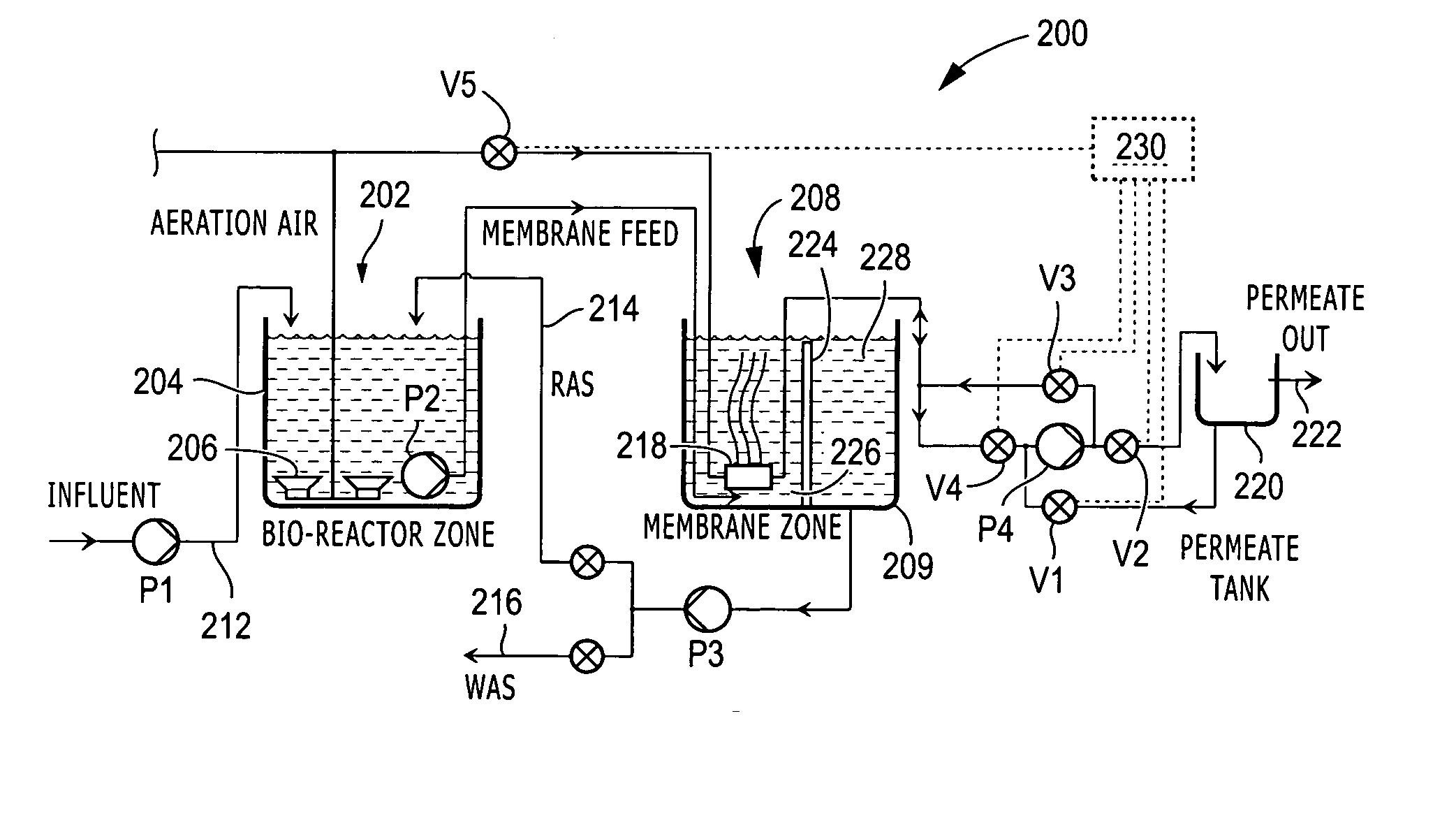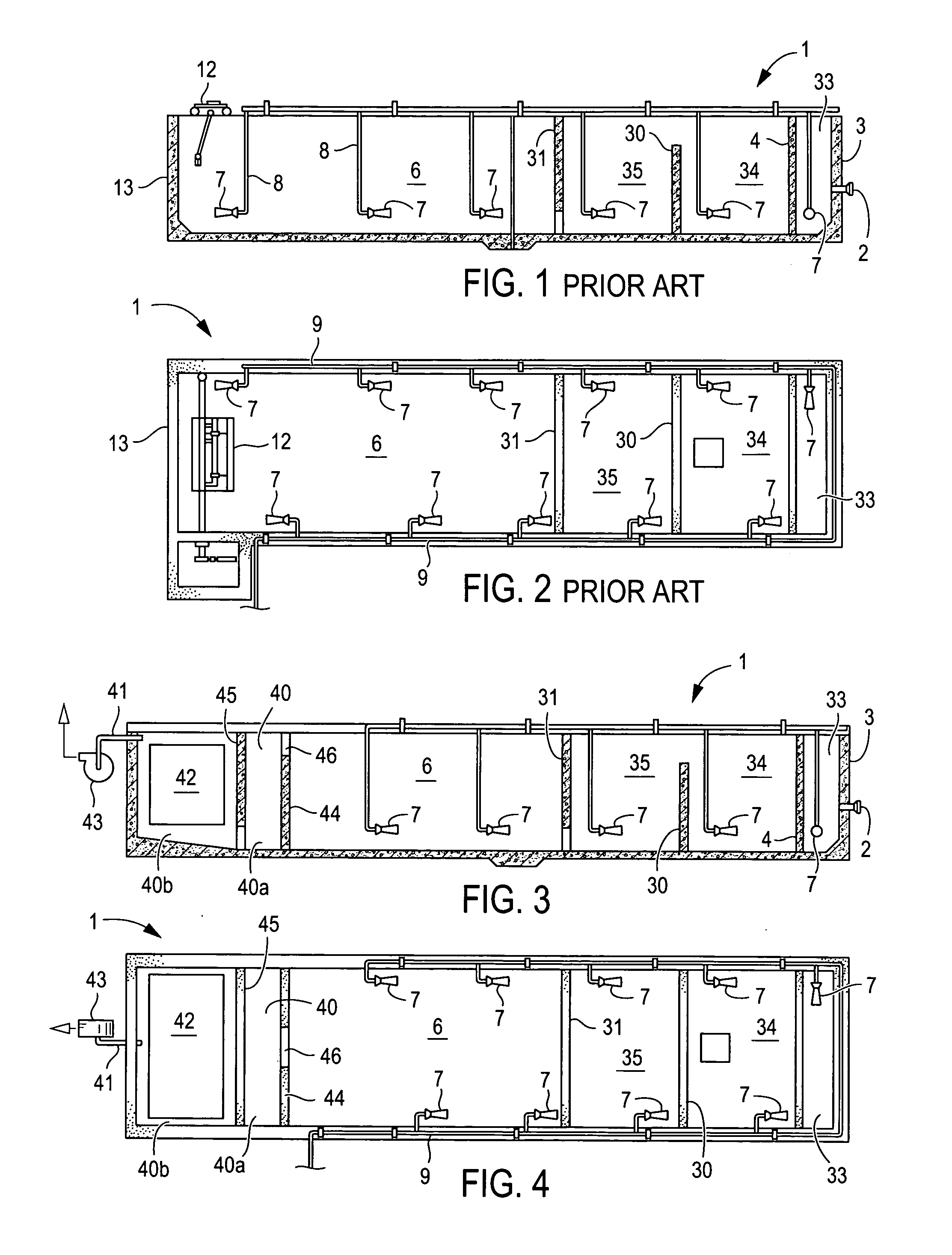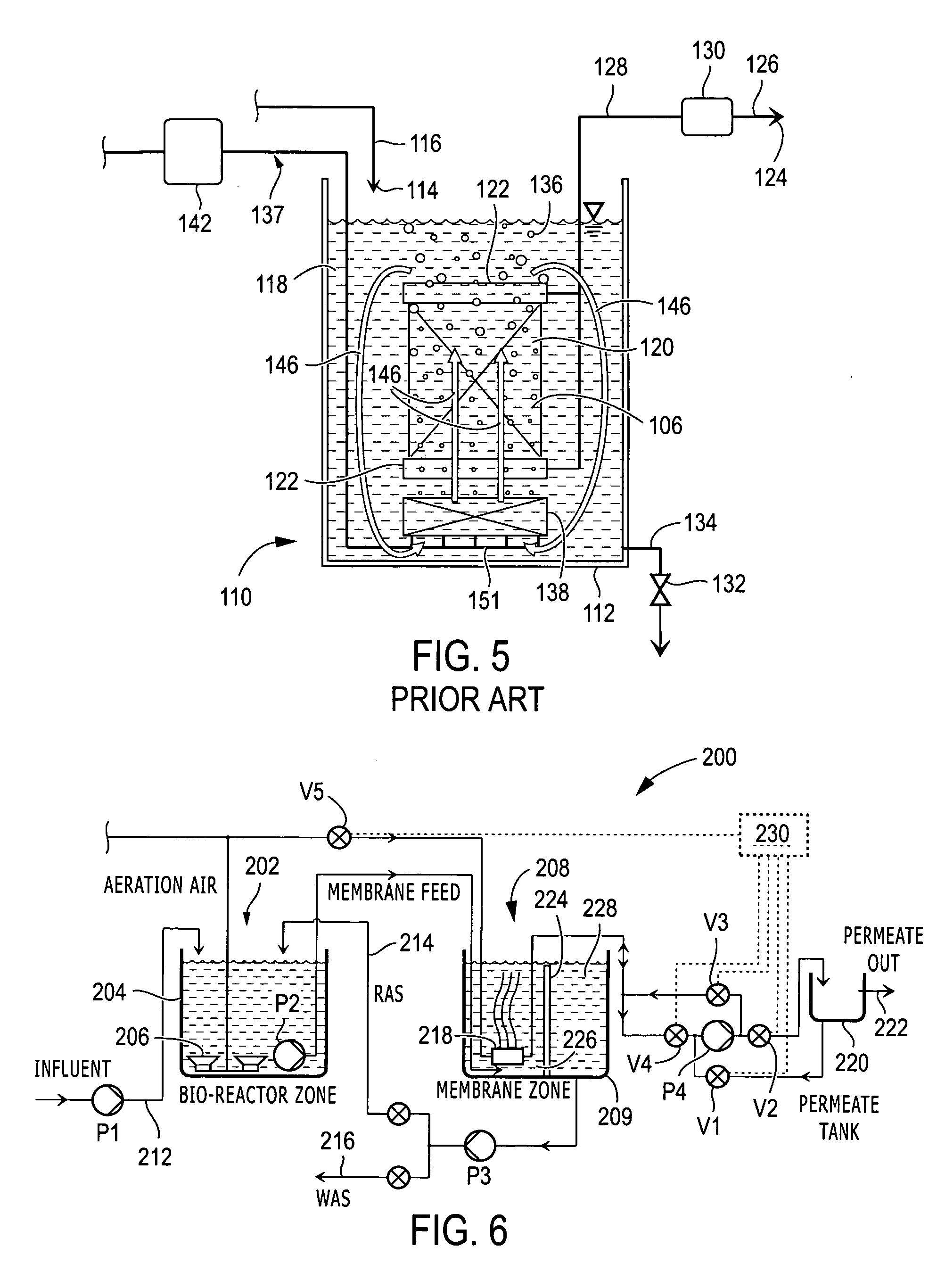Energy-efficient biological treatment with membrane filtration
a membrane filtration and biological treatment technology, applied in the field of membrane filtration, can solve the problems of inefficient biological treatment process, high cost of operating these systems, and significant capital and operating expense of the process, and achieve the effect of efficient operation
- Summary
- Abstract
- Description
- Claims
- Application Information
AI Technical Summary
Benefits of technology
Problems solved by technology
Method used
Image
Examples
example
[0059] A pilot study was conducted on an effluent treatment process having municipal raw waste feed of approximately 2-4 gpm, pretreated by coarse screening to 3 mm. The average flow characteristics included BOD5 at 200-300 mg / l, suspended solids at 150-250 mg / l, and ammonia at 25-35 mg / l. The membrane zone of the pilot unit was equipped with hollow fiber ultrafiltration membranes that were installed and optimized to derive the dimensional (positioning from nearest wall, floor, liquid level line) and operational (vertical flow velocity) parameters disclosed and claimed herein. Operation was conducted at an MLSS of between 3,500 and 8,000 mg / l and FM ratios from 0.01 to 1.5. Optimum biological aeration and air scour / backwash efficiency were achieved at a loading F / M ratio of 0.05-5. Cleaning cycles were also optimized in this range. The pilot was operated in both a continuous mode as an MBR and in a cyclic mode as an SMBR (in which the MLSS in the decant / filtration stage was allowed ...
PUM
| Property | Measurement | Unit |
|---|---|---|
| Length | aaaaa | aaaaa |
| Length | aaaaa | aaaaa |
| Length | aaaaa | aaaaa |
Abstract
Description
Claims
Application Information
 Login to View More
Login to View More - R&D
- Intellectual Property
- Life Sciences
- Materials
- Tech Scout
- Unparalleled Data Quality
- Higher Quality Content
- 60% Fewer Hallucinations
Browse by: Latest US Patents, China's latest patents, Technical Efficacy Thesaurus, Application Domain, Technology Topic, Popular Technical Reports.
© 2025 PatSnap. All rights reserved.Legal|Privacy policy|Modern Slavery Act Transparency Statement|Sitemap|About US| Contact US: help@patsnap.com



